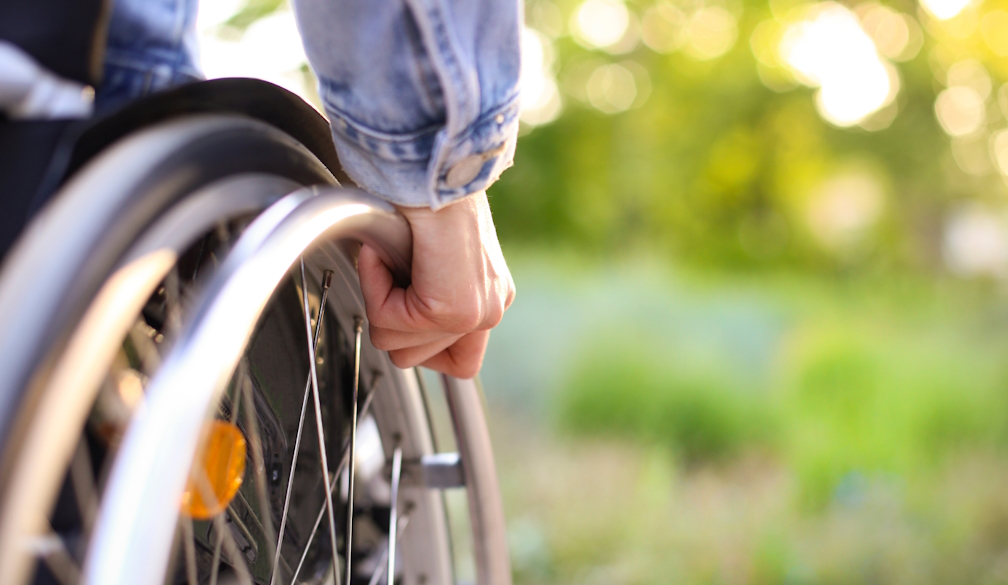Australians with disability are 4 times more likely to die early – often not due to their disability
- Written by Yi Yang, Research Fellow, Melbourne School of Population and Global Health, The University of Melbourne

When Finlay Browne died at just 16 years old, “Down syndrome” was listed on his death certificate as a cause of death.
But Finlay did not die of Down syndrome. A coroner found earlier this year that the teenager died due to complications from a bowel obstruction, and noted[1] “issues concerning the adequacy of care and treatment” provided at his local hospital.
Since Finlay died his family have spoken out many times about the need to improve health care for people with an intellectual disability.
But sadly Finlay is not alone. Our new study[2] published in The Lancet Public Health shows Australians with disability are around four times more likely to die early than people without disability.
Our research
We looked at census data from more than 15 million Australians aged 0–74 between 2011–20, and analysed death certificate information of those who died during this period (around 463,000 people).
We found people with disability are dying of conditions such as cancer, heart disease, chronic lung conditions and diabetes at a much higher rate than the rest of the population.
Men with disability are dying at almost four times the rate of men without disability. Meanwhile, women with disability are dying at almost five times the rate of their non-disabled peers.
While our study drew on large data sets and used complex statistical techniques, we are conscious that the dots on our graphs represent many premature and preventable deaths of people like Finlay.
Why the disparity?
The diseases causing the early deaths of many Australians with disability are generally more common among people living in disadvantaged circumstances[4]. We know poverty, poor-quality housing and exclusion from the health system[5] contribute to early death. These circumstances are more common[6] among Australians with disability compared to the overall population.
People with disability face the same issues as many other Australians when trying to access good health care, such as lack of availability, rising costs and long wait times. But they also face[7] additional challenges[8]. For example:
-
buildings where health services are located are not always accessible to people with disability
-
people with disability sometimes experience discrimination by health-care staff including GPs, nurses and hospital staff
-
people with disability often see multiple health professionals for the same health conditions and report a lack of communication between health professionals treating them.
Unfortunately the results of our study are not surprising. People with disability, families and advocacy organisations[9] have spoken for many years about poor health outcomes for people with disability, as well as early deaths that, with the right action, could have been prevented.
The recent Royal Commission[10] into Violence, Abuse, Neglect and Exploitation of People with Disability heard directly from people with disability[11] about the impacts of poverty, poor housing and discrimination in the health system on health and wellbeing[12].
What can we do?
Our study is the first of its type and size in Australia, which is telling.
Historically, understanding patterns in causes of death has informed our public health priorities. But up until now, patterns in causes of death[13] for people with disability have largely not been prioritised, gathered or analysed. With inadequate data, public health efforts have systematically neglected people with disability[14].
Yet poorer health outcomes for people with disability are not inevitable.
We need to see concerted, coordinated action across metropolitan, regional and rural Australia to prevent more unnecessary deaths. As a nation, we need to tackle the conditions in which many people with disability live – starting with poverty and the lack of affordable, accessible housing.
We also need to make health care more accessible and affordable for people with disability.
But, none of this will be enough if we don’t confront discrimination in health care head on. This will involve making changes[15] in policies, processes and systems[16] at all levels of health care that adjust for the needs of people with disability.
We also need to think about whether our general disease prevention strategies, some of which have been hugely successful, are reaching people with disability[17]. For example, are people with disability able to access routine screening in the same way as others? Or are they missing out?
Ultimately, we need to debunk the myth that poor health is part and parcel of having a disability. What is inevitable is that Australians with disability will keep dying before their time unless we take action, and make the health and wellbeing of people with disability a national priority.
References
- ^ and noted (www.abc.net.au)
- ^ new study (www.thelancet.com)
- ^ Unai Huizi Photography/Shutterstock (www.shutterstock.com)
- ^ living in disadvantaged circumstances (theconversation.com)
- ^ health system (theconversation.com)
- ^ more common (humanrights.gov.au)
- ^ they also face (www.themissingbillion.org)
- ^ additional challenges (www.aihw.gov.au)
- ^ advocacy organisations (cid.org.au)
- ^ Royal Commission (theconversation.com)
- ^ people with disability (disability.royalcommission.gov.au)
- ^ health and wellbeing (www.abc.net.au)
- ^ patterns in causes of death (www.thelancet.com)
- ^ neglected people with disability (www.thelancet.com)
- ^ making changes (www.safetyandquality.gov.au)
- ^ processes and systems (credh.org.au)
- ^ people with disability (journals.plos.org)

















